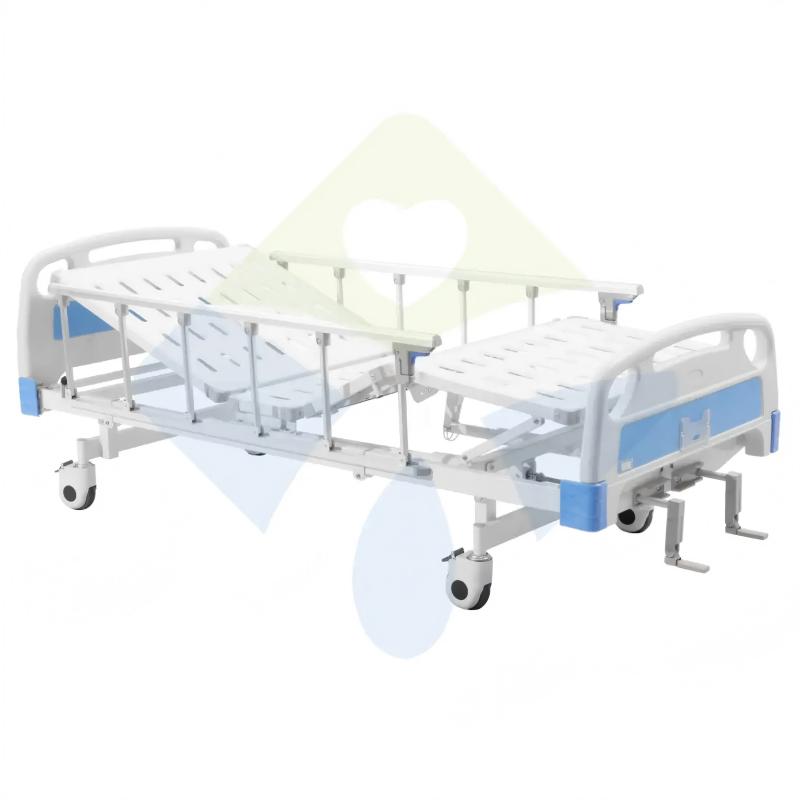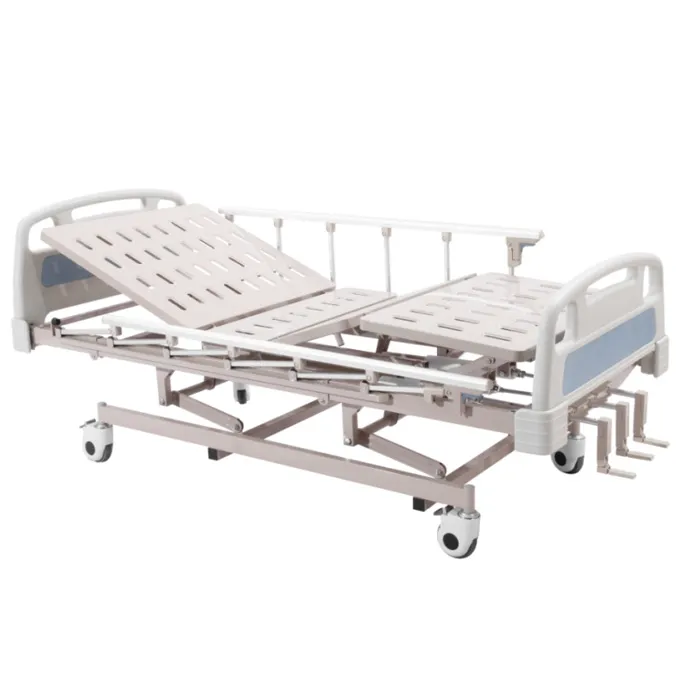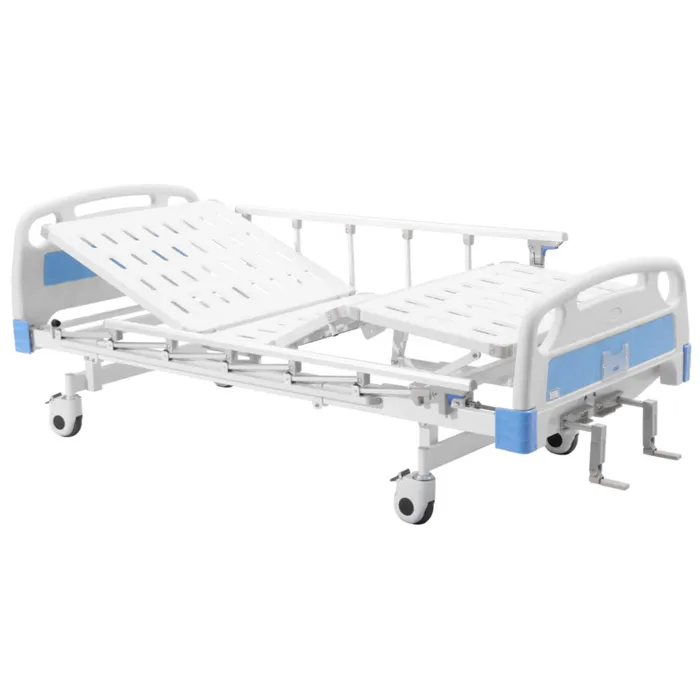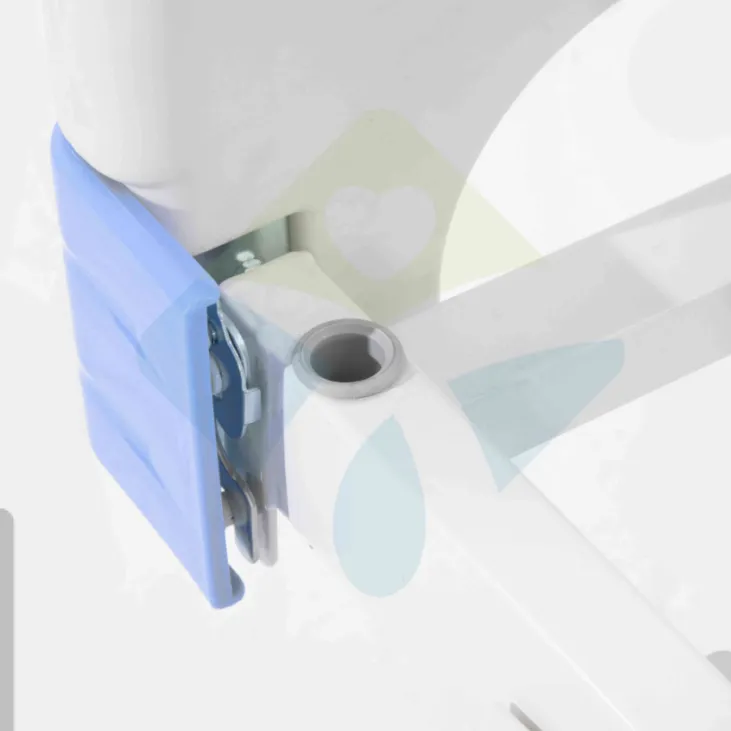In modern medical care equipment, adjustable hospital bed has become an important infrastructure for hospitals, rehabilitation centers and home care places. Through electric or manual control, adjustable hospital bed can adjust multiple dimensions such as bed height, back angle, leg support position, etc., which is convenient for patients to change their positions and assist nursing actions, thereby greatly improving nursing efficiency and patient comfort.
Although adjustable hospital bed is widely used in most scenarios due to its high flexibility and adaptability, not all patients or nursing objects are suitable for using such equipment. In actual clinical and home applications, there are some specific groups of people who are not suitable for using adjustable hospital bed, or their use may lead to increased nursing burden or even potential risks.
This article will conduct an in-depth analysis around the key issue of "Who is not suitable for using adjustable hospital bed", systematically explain the structural characteristics, population adaptation conditions, taboo characteristics and logical basis of adjustable hospital bed, and provide information with decision-making reference value for medical care personnel and equipment purchasers.

What is adjustable hospital bed?
An adjustable hospital bed is a bed with a bed adjustment function. It can be controlled by a manual crank or an electric motor to achieve the following:
·Bed height adjustment;
·Back lifting or laying flat;
·Leg lifting or lowering;
·Overall tilt (such as Trendelenburg position or reverse Trendelenburg position).
Adjustable hospital beds mainly serve long-term bedridden patients, postoperative rehabilitation patients, the elderly and people with limited mobility. They are widely used in hospitals, nursing homes, home care and other scenarios.
Common types of adjustable hospital beds
·Manual adjustable hospital bed: The bed angle is changed through a rocker drive mechanism;
·Electric adjustable hospital bed: The motor push rod system is used for adjustment;
·Multifunctional nursing bed: In addition to conventional adjustment functions, it also has expansion structures such as turning over, position assistance, and mobile locking.
Understanding these structures and functions is the basis for evaluating whether a certain group of people are suitable for using an adjustable hospital bed.

Who is not suitable for using an adjustable hospital bed?
Although the adjustable hospital bed has more advantages than disadvantages in most cases, the following groups of people are not suitable for using it according to the structural characteristics and operation methods of the equipment, and may even cause interference, accidental injury or difficulty in nursing during use.
Six groups of people who are not suitable for adjustable hospital beds:
1. Patients with confusion or mental disorders
2. Extremely thin or underweight elderly people
3. Vegetative or completely paralyzed people with no self-control ability
4. Patients with limb deformities or severe joint contractures
5. People who are contraindicated from changing their body position in the early postoperative period
6. Risk patients who are highly dependent on restraint devices
1. Patients with confusion or mental disorders
This group of people includes patients with moderate to severe dementia, those with unclear consciousness, and mentally ill patients with severe depression or mania, etc.
Reasons for unsuitability:
·No perception or slow reaction to the bed's movements, unable to adapt to changes such as back lifting and leg lifting;
·Easy to panic or be confused during operation and not cooperate with adjustments;
·May accidentally touch the control, causing the bed to move without the supervision of nursing staff, causing falls or injuries;
·Lack of comprehension ability, unable to cooperate with the instructions of nurses or family members, but increasing the risk of care.
Therefore, it is not safe for people with impaired cognitive function and disordered consciousness to use an adjustable hospital bed. It is usually recommended to choose a more stable and fixed-structure bed.
2. Extremely thin or underweight elderly people
Elderly people weighing less than 40 kilograms, with severe muscle atrophy and advanced osteoporosis, have a higher risk of crushing and displacement when using an adjustable hospital bed.
Reasons for not being suitable:
·The mechanical structure of the adjustable hospital bed determines that the bed will generate a certain amount of mechanical thrust when it is raised, lowered or turned over;
·Extremely thin patients are prone to concentrated bone pressure due to uneven support surfaces, which may induce pressure sores;
·When adjusting the bed surface, the patient may slide with the bed board, causing position deviation or even falling;
·Some light-weight people may have the risk of rolling when the bed is tilted due to unstable body position.
This group of people is more suitable for a low-bed, single-side adjustable, high-stability nursing bed type, rather than a standard adjustable hospital bed.
3. Vegetative or completely paralyzed people with no autonomous control ability
This type of patient relies entirely on external forces to move, lacks muscle tension, and cannot make autonomous adjustments or support.
Reasons for not being suitable:
·The design of the adjustable hospital bed is based on "assisted position adjustment", which requires the patient to have at least some muscle tension or feedback ability;
·Patients who are completely paralyzed or in a vegetative state cannot actively maintain stability when the angle of the bed changes;
·High-angle backboard lifting may cause problems such as sagging head and neck and airway compression;
·Even if operated by nursing staff, the nursing efficiency may decrease due to increased difficulty in cooperation.
For such patients, it is more recommended to use a full-plane stable structure, non-frequently adjustable bed, supplemented by artificial position care.

4. Patients with limb deformities or severe joint contractures
Some patients with neuropathy, cerebral palsy, ankylosing spondylitis, etc. have varying degrees of joint fixation, abnormal posture and other problems.
Reasons for inappropriateness:
· The standard movement path of the adjustable hospital bed (such as 45° back lift, 90° leg folding) is not suitable for patients with joint dysfunction;
· Forced adjustment of the bed angle may cause joint strain, fracture or nerve compression;
· Some patients with severe posture disorders cannot lie flat or half-sit, and using a standard adjustable hospital bed will cause discomfort;
· For patients whose bed activities rely on specific body positions for support, structural changes may undermine their stability.
This group of people should choose a personalized bed or special rehabilitation bed according to their condition to avoid the negative effects of a universal adjustable structure.
5. Those who are contraindicated to change their body position in the early postoperative period
For patients in the recovery period after major abdominal surgery, spinal fixation surgery, cranial surgery, etc., the doctor's instructions usually clearly prohibit certain body positions or movements.
Reasons for not being suitable:
·In the early postoperative period, the doctor's orders require the patient to lie flat or supine to avoid pulling the wound or affecting internal fixation;
·Although the adjustable hospital bed has flexible adjustment functions, if the patient raises the back or tilts the bed by mistake, it may cause wound tearing, abnormal drainage, and other consequences;
·Some patients have not yet established body sensory feedback, and are prone to stress reactions such as nausea and vomiting during bed changes.
Therefore, in the early postoperative period, unless the doctor's orders specifically allow, it is usually not recommended to use an adjustable hospital bed with a multi-angle change function.
6. Risk patients who are highly dependent on restraint devices
For example, patients with severe mental disorders, those who often turn over and fall, and patients with aggressive behavior.
Reasons for not being suitable:
·The adjustable hospital bed has strong mobility and maneuverability, which is not conducive to the fixation of the patient's position;
·Conventional guardrails are not restraining enough for some patients with high-risk behaviors;
·The mobility during bed adjustment may stimulate behavioral attacks, such as restlessness, bed jumping, self-injury, etc.;
·Nursing staff need to operate and monitor at all times, which increases the management intensity.
For this type of patients, a closed nursing bed with firmness, high siderails and no electric system is more needed.

Adaptation is not determined by function, but by the conditions of the population
As a nursing tool with high flexibility and functional integration, the adjustable hospital bed itself has a wide range of adaptability. However, just like any medical equipment, the more functions the better, the more complex and advanced it is, the more suitable it is for everyone.
From a structural analysis, the design purpose of the adjustable hospital bed is to improve the efficiency and comfort of body position adjustment, but when it is applied to certain specific populations, it may cause:
· Complex operation;
· Increased risk of use;
· Increased difficulty of nursing;
· Unstable patient status.
Therefore, when choosing whether to use an adjustable hospital bed for a patient, it is necessary to carefully evaluate factors such as their cognitive state, physical condition, pathological characteristics, behavioral patterns and postoperative recovery stage. We cannot blindly pursue full functional coverage, but should be based on the core principles of safety, adaptation and practicality.
Can we establish a long-term partnership with Yikang Medical?
Yes, we welcome long-term partnerships and are committed to building lasting relationships with our customers. Whether you're a distributor, healthcare provider, or medical facility, Yikang Medical offers flexible terms for long-term cooperation. With our wide range of hospital furniture, rehabilitation equipment, and nursing devices, we are confident that we can support your ongoing supply needs with high-quality products and reliable service.

